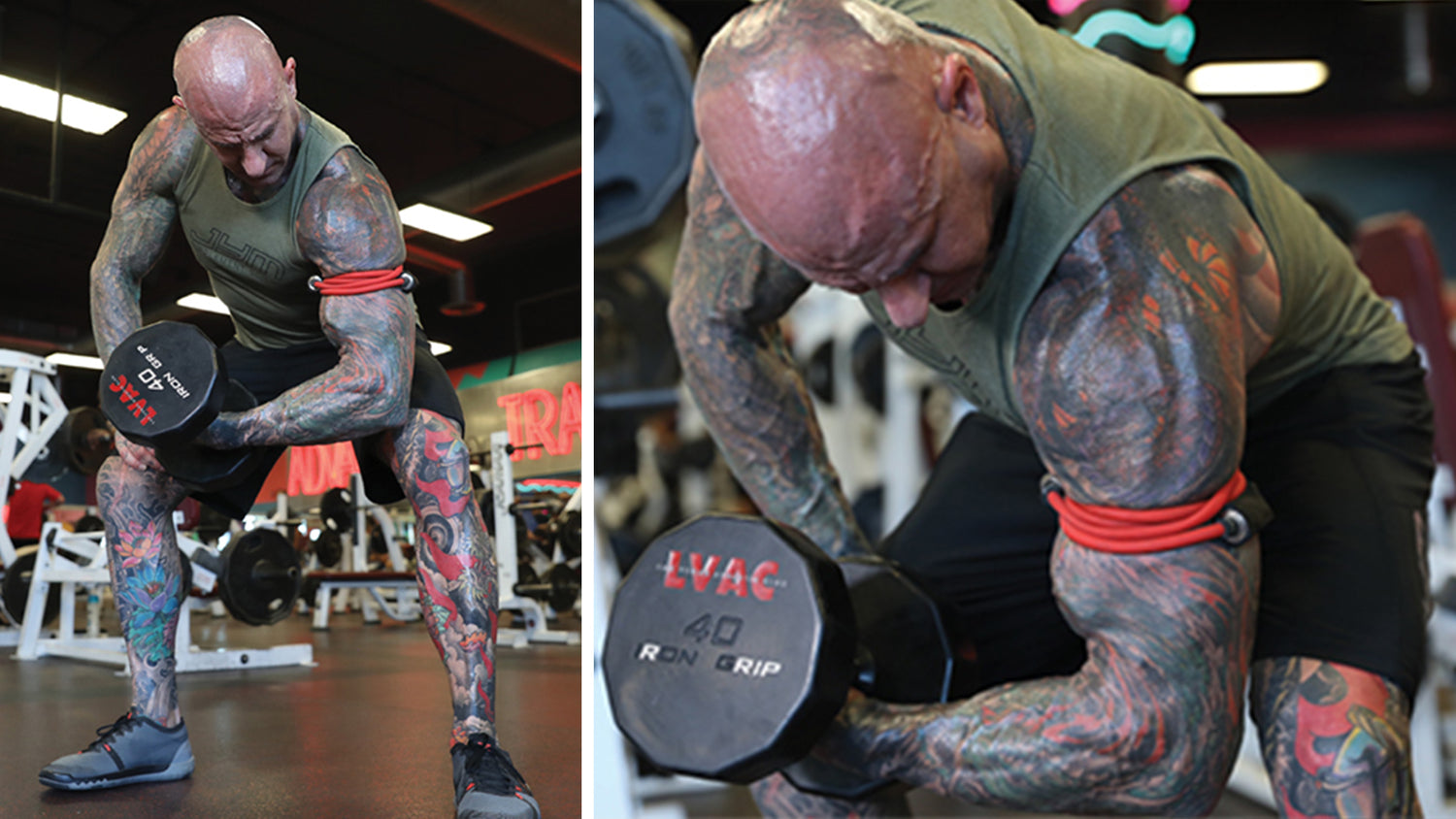Here’s the answer to whether this novel technique is worth trying out.
Maybe you've heard of this thing called occlusion training, where you cinch off an arm or leg and do a lifting set in hopes of sparking new gains in muscle size in an otherwise lagging bodypart. It sounds a bit out there, but some training guru types swear by it.
So what gives? Should you bring a cuff or band with you to the gym for some occlusion sets of curls to get bigger biceps or leg extensions to pump up your quads? Dr. Jim Stoppani, being the longtime training expert that he is, has some experience in the research lab with occlusion training. So naturally, he has an opinion on the matter—and a highly credible one, at that. In the below video, he covers the topic and offers his take on whether to use it, and if so, how and when.
What is Occlusion Training?
It may sound pretty esoteric, but it’s fairly simple. Occlusion training involves using a tourniquet – typically in the form of an elastic band, cuff, or strap – on a working bodypart to restrict blood flow to and from the focus area. Essentially what you’re doing is creating a hyper-anaerobic environment within the muscle.
Normally when training, you have blood flowing to the working muscles to provide oxygen as well as leaving the muscles to clear waste products created by intense contractions. With occlusion training, you’re cinching off the area so that the blood can’t leave; instead, it pools in the muscle for the duration of the exercise.
According to research, most notably by Japanese scientist Dr. Yoshiaki Sato while using his patented KAATSU “blood flow modification” method, the pooling environment results in increased nitric oxide production and growth hormone secretion in the body, as well as lactic acid buildup in the target muscles, which in turn leads to more size and strength.
One key feature of occlusion training is that it delivers these results via extremely light loads — for example, a weight you can normally do for 30, 50, or more consecutive reps. This can be highly beneficial for people who have joint issues, are rehabbing an injury, or for those who simply want to gain size minus the wear and tear that comes from heavy weights.
Should You Use Occlusion Training?
“I’m definitely a believer in the benefits of occlusion training, but I’ll be honest, it’s not the most practical way to train,” says Dr. Stoppani. “Aside from requiring additional equipment and having to secure it correctly before doing the exercise, you’re limited to what bodyparts you can use occlusion training for – pretty much just the arms and legs, since there’s really no way to block blood flow to the chest, lats, delts, or traps.”
Not to mention, occlusion training is very painful. Give it a try (under qualified supervision) and you’ll see. This is what happens when you don’t let blood flow freely to and from a hard-working muscle — it hurts.
That said, you may have a specific circumstance that calls for occlusion training. Before you go down that rabbit hole, consider the following tips and above video explanation by Dr. Stoppani.
Dr. Jim Stoppani’s 3 Occlusion Training Tips
- Reserve occlusion training for when you’re recovering from an injury and are only able to lift very light weights.
- Make sure you’re using the proper equipment for occlusion training – preferably a blood pressure cuff. Some people use belts or elastic bands, but this can potentially be dangerous as it may cut off circulation to a limb. You don’t want to cut off circulation; you just want to reduce it.
- If you’re going to do occlusion training, do so only under the guidance and supervision of a qualified healthcare professional who has extensive experience facilitating this type of modality – for example, a physical therapist who’s helping you rehab from an injury in a clinical setting.




